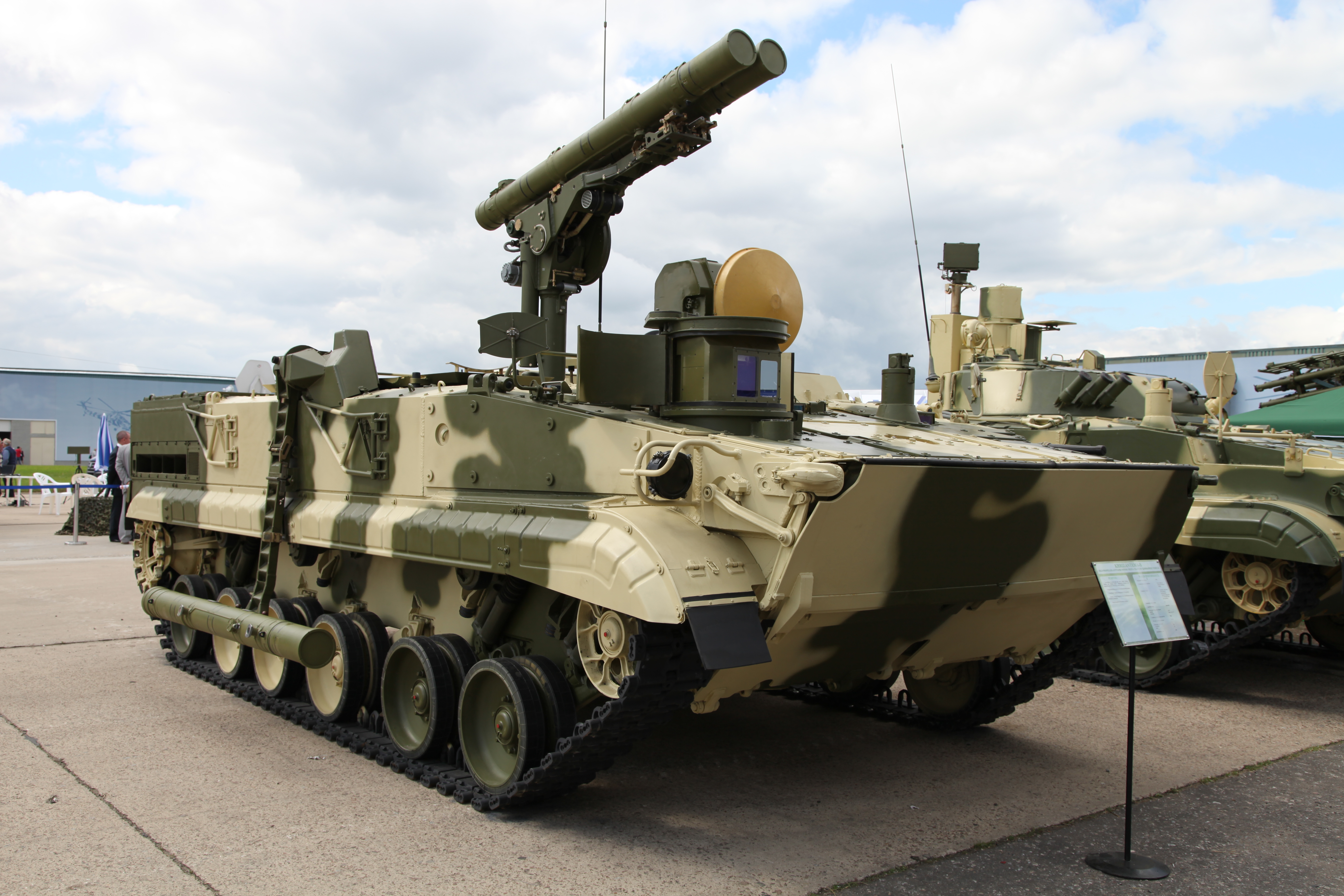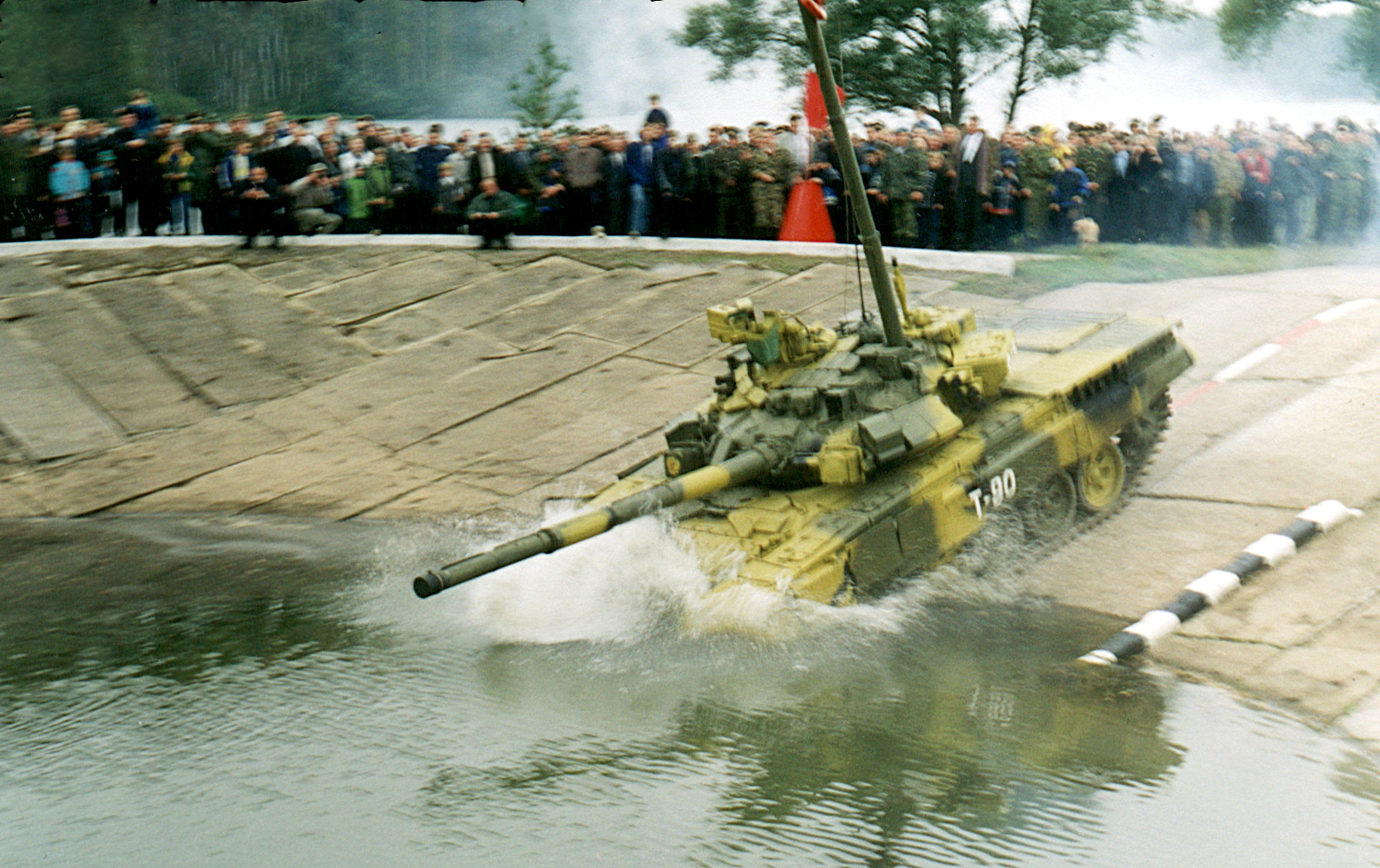|
MSS-1.2
The MSS-1.2 is Brazilian anti-tank missile, Anti-tank guided missile with laser guidance used for close-range fighting. It is the standard personal missile launch system of the Brazilian army and marine corps. The MSS 1.2 has a range of 500 to 3,000 m and can be used against tanks, armoured vehicles, infantry, bunkers, small buildings, boats, aircraft, and helicopters. Initially, this missile was jointly developed by OTO Melara in Italy and ENGESA in Brazil as the Missile Anticarro della Fanteria (MAF), with the program beginning in 1985. The MAF was later renamed the LEO, in honor of Minister of the Army Leonidas Goncalves, but that name as well gave-way to a later designation, the current MSS 1.2. After ENGESA went bankrupt in 1993, the program was handed over to ORBITA, and later Mectron (also a Brazilian company). OTO Melara eventually ceded the entire program to Mectron, who continued to develop it for an agonizingly long duration --- after 16 more years and at least one maj ... [...More Info...] [...Related Items...] OR: [Wikipedia] [Google] [Baidu] |
SIATT
SIATT is a Brazilian company headquartered in São José dos Campos, São Paulo. It is a company focused on high-tech market, especially for the defense industry. The company was founded on 2015 as Mectron through an association of engineers from other companies in the sector in São José dos Campos. Among its main products are radars, weapons, missiles, Precision-guided munition, PGMs and Simulation, simulators. After the founders of Mectron moved away from the company, the company named SIATT was established based on former Mectron. Products *Tailchute Recovery System for the Embraer E-Jet family. *Mectron MAA-1 Piranha, MAA-1A Piranha: Missile air-air short-range infrared guidance. *MAA-1B, MAA-1B Piranha: The project is no longer under development, it would be a 4.5 generation missile, but according to the 2017 annual report from Brazilian Air Force (FAB), after spending R$ 50.631.057,22 (CE NOV04) the project were decommissioned. *A-Darter (missile): A project that is be ... [...More Info...] [...Related Items...] OR: [Wikipedia] [Google] [Baidu] |
Beam Riding
Beam-riding, also known as Line-Of-Sight Beam Riding (LOSBR) or beam guidance, is a technique of directing a missile to its target by means of radar or a laser beam. The name refers to the way the missile flies down the guidance beam, which is aimed at the target. It is one of the simplest guidance systems and was widely used on early missile systems, however it had a number of disadvantages and is now found typically only in short-range roles. Basic concept Beam riding is based on a signal that is pointed towards the target. The signal does not have to be powerful, as it is not necessary to use it for tracking as well. The main use of this kind of system is to destroy airplanes or tanks. First, an aiming station (possibly mounted on a vehicle) in the launching area directs a narrow radar or laser beam at the enemy aircraft or tank. Then, the missile is launched and at some point after launch is “gathered” by the radar or laser beam when it flies into it. From this stage onwa ... [...More Info...] [...Related Items...] OR: [Wikipedia] [Google] [Baidu] |
Brazilian Marine Corps
) , colors=Red and white , colors_label=Colors , march= , mascot= , battles =Portuguese conquest of French Guiana, Invasion of Cayenne (1809)Portuguese conquest of the Banda Oriental, Banda Oriental Conquest (1816)War of Independence of Brazil, War of Independence (1821–1824)Confederation of the Equator(1824)Cisplatine War(1825–1828)Ragamuffin War(1835–1845)Platine War(1851–1852)Uruguayan War(1864–1865)Paraguayan War(1864–1870)Brazilian Naval Revolt, Naval Revolt(1893-1894)Araguaia guerrilla (1972-1974)Maré, Rio de Janeiro, Operation São Francisco (2014)Timeline of United Nations peacekeeping missions, U.N. missionsUnited Nations Stabilisation Mission in Haiti, Haiti (2004-2017) , anniversaries= March 7 , decorations= , battle_honours= , commander1= President of Brazil, President Jair Bolsonaro , commander1_label= Commander-in-chief#Brazil, Commander-in-Chief , commander2= Admiral Almir Garnier Santos , commander2_label= Commander of the Navy , commander3= Admiral ... [...More Info...] [...Related Items...] OR: [Wikipedia] [Google] [Baidu] |
ATGM
An anti-tank guided missile (ATGM), anti-tank missile, anti-tank guided weapon (ATGW) or anti-armor guided weapon is a guided missile primarily designed to hit and destroy heavily armored military vehicles. ATGMs range in size from shoulder-launched weapons, which can be transported by a single soldier, to larger tripod-mounted weapons, which require a squad or team to transport and fire, to vehicle and aircraft mounted missile systems. Earlier man-portable anti-tank weapons like anti-tank rifles and magnetic anti-tank mines, generally had very short range, sometimes on the order of metres or tens of metres. Rocket-propelled high-explosive anti-tank (HEAT) systems appeared in World War II and extended range to the order of hundreds of metres, but accuracy was low and hitting targets at these ranges was largely a matter of luck. It was the combination of rocket propulsion and remote wire guidance that made the ATGM much more effective than these earlier weapons, and gave lig ... [...More Info...] [...Related Items...] OR: [Wikipedia] [Google] [Baidu] |
Laser Guidance
Laser guidance directs a robotics system to a target position by means of a laser beam. The laser guidance of a robot is accomplished by projecting a laser light, image processing and communication to improve the accuracy of guidance. The key idea is to show goal positions to the robot by laser light projection instead of communicating them numerically. This intuitive interface simplifies directing the robot while the visual feedback improves the positioning accuracy and allows for implicit localization. The guidance system may serve also as a mediator for cooperative multiple robots. Examples of proof-of-concept experiments of directing a robot by a laser pointer are shown on video. Laser guidance spans areas of robotics, computer vision, user interface, video games, communication and smart home technologies. Commercial systems Samsung Electronics Co., Ltd. may have been using this technology in robotic vacuum cleaners since 2014. Google Inc. applied for ... [...More Info...] [...Related Items...] OR: [Wikipedia] [Google] [Baidu] |
Warhead
A warhead is the forward section of a device that contains the explosive agent or toxic (biological, chemical, or nuclear) material that is delivered by a missile, rocket, torpedo, or bomb. Classification Types of warheads include: *Explosive: An explosive charge is used to disintegrate the target, and damage surrounding areas with a blast wave. ** Conventional: Chemicals such as gunpowder and high explosives store significant energy within their molecular bonds. This energy can be released quickly by a trigger, such as an electric spark. Thermobaric weapons enhance the blast effect by utilizing the surrounding atmosphere in their explosive reactions. *** Blast: A strong shock wave is provided by the detonation of the explosive. ***Fragmentation: Metal fragments are projected at high velocity to cause damage or injury. ***Continuous rod: Metal bars welded on their ends form a compact cylinder of interconnected rods, which is violently expanded into a contiguous zig-zag ... [...More Info...] [...Related Items...] OR: [Wikipedia] [Google] [Baidu] |
9M123 Khrizantema
The 9M123 Khrizantema (russian: "Хризантема"; en, Chrysanthemum, NATO reporting name AT-15 Springer) is a Russian anti-tank guided missile (ATGM). Khrizantema was designed to deal with current and future generations of main battle tanks and can also be used to engage slow and low flying aerial targets like helicopters. The 9M123 missile, and its associated guidance system, forms the 9K123 missile system. Development The Khrizantema anti-tank missile was unveiled in July 1996 by the Konstruktorskoye Byuro Mashynostroyenia (KB Mashinostroyeniya – KBM) Engineering Design Bureau. The missile began development in the 1980s and was designed as an all weather, multi-purpose missile system that could defeat current and future armoured units equipped with advanced armour protection, such as explosive reactive armour (ERA). Khrizantema was envisaged as a replacement for a variety of different types of anti-tank missiles that remained in service with the Russian military, such a ... [...More Info...] [...Related Items...] OR: [Wikipedia] [Google] [Baidu] |
T-90
The T-90 is a third-generation Russian main battle tank. It uses a 125mm 2A46 smoothbore main gun, the 1A45T fire-control system, an upgraded engine, and gunner's thermal sight. Standard protective measures include a blend of steel and composite armour, smoke grenade dischargers, Kontakt-5 explosive reactive armour (ERA) and the Shtora infrared anti-tank guided missile (ATGM) jamming system. The T-90 was designed and built by Uralvagonzavod, in Nizhny Tagil, Russia. It entered service with the Russian Army in 1992. Development The T-90 has its origins in a Soviet-era program aimed at developing a single replacement for the T-64, T-72 and T-80 series of main battle tanks. The T-72 platform was selected as the basis for the new generation of tank owing to its cost-effectiveness, simplicity and automotive qualities. The Kartsev-Venediktov Design Bureau from Nizhny Tagil was responsible for the design work and prepared two parallel proposals—the ''Object 188'', whic ... [...More Info...] [...Related Items...] OR: [Wikipedia] [Google] [Baidu] |


.jpg)

